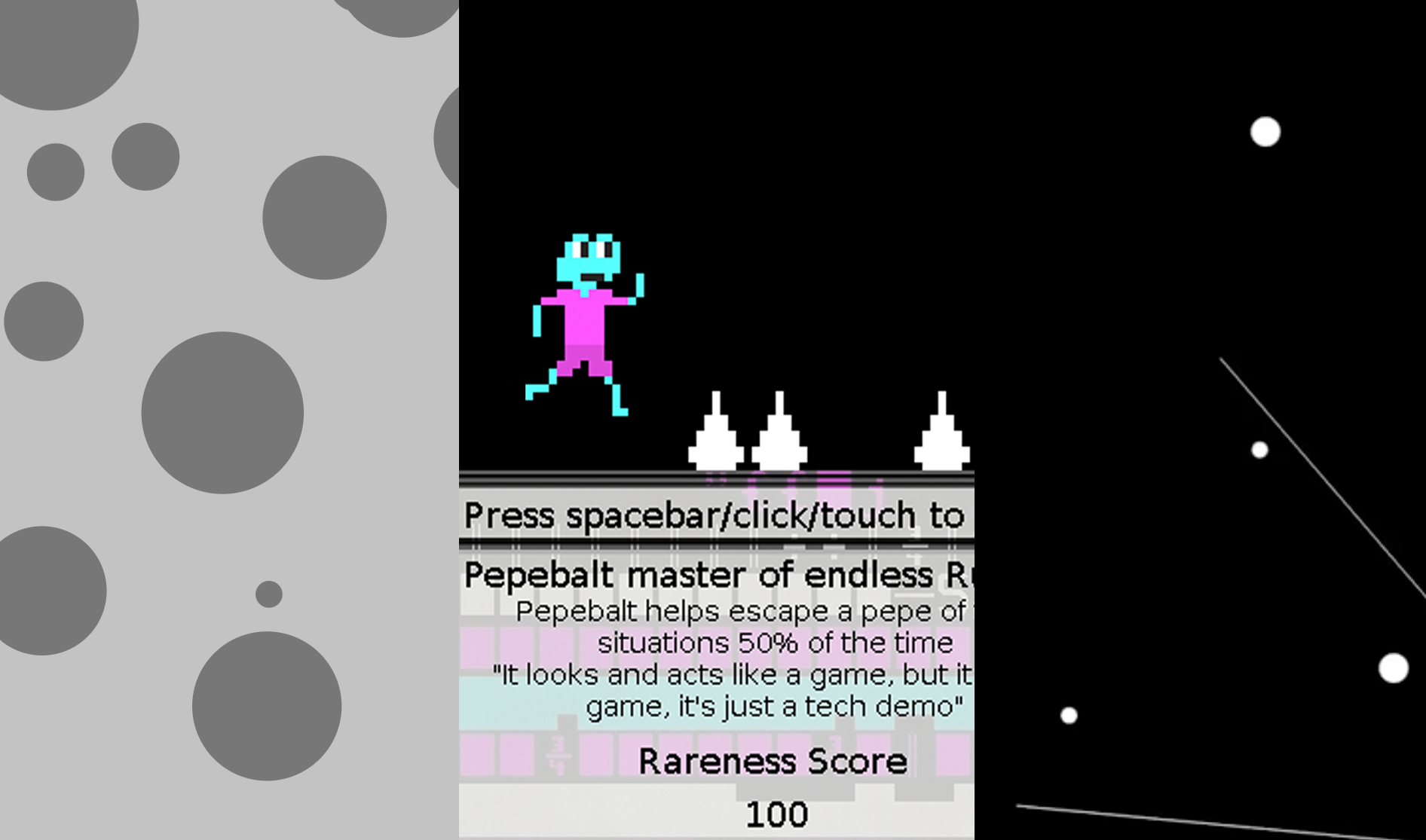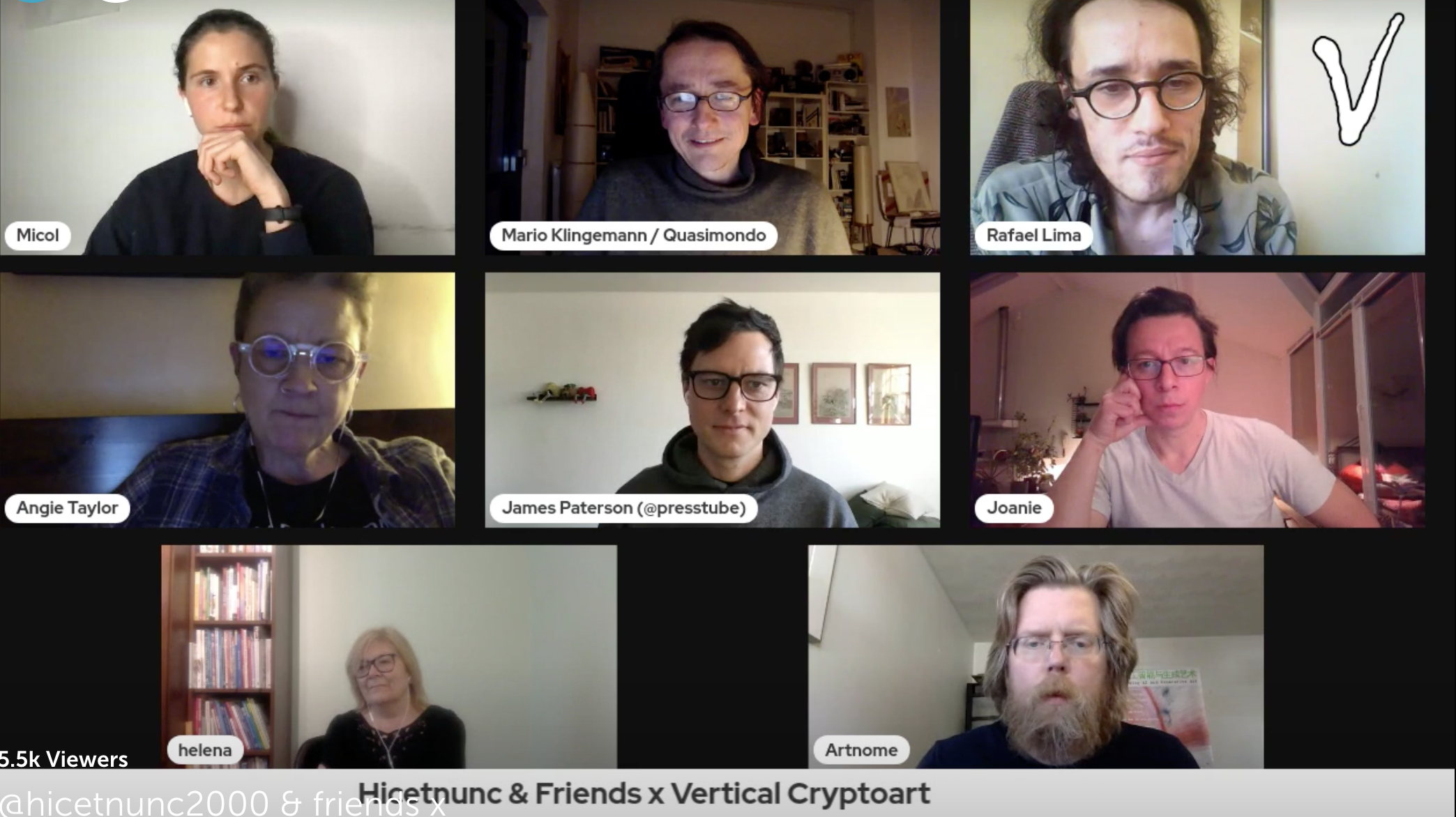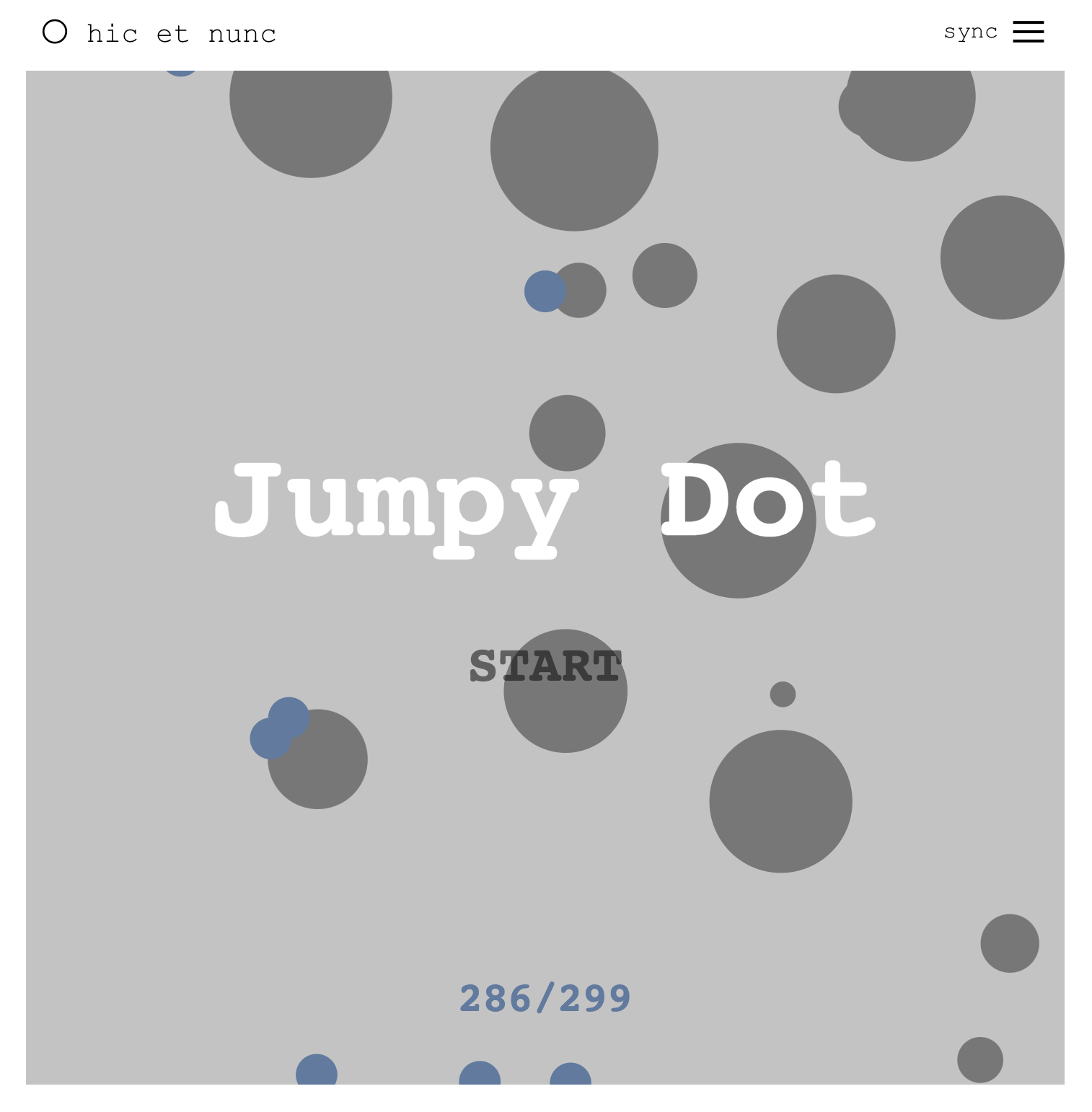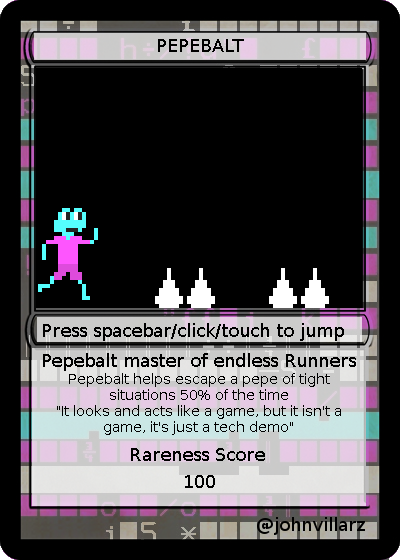I am pretty busy these days as an unofficial spokesperson during NFT mania's rise, so I don't get to write as often as I'd like to. I see my role as pointing people to cool new developments at the intersection of art and tech and making sure we celebrate those people too often overlooked in the development of its history. So I felt compelled to write a short article here that I hope does both.
There is an exciting new platform for NFTs called Hic et Nunc created by Rafael Lima that you should check out. It makes progress in solving a lot of the concerns I hear about NFTs.
Based on PoS, so it all but eliminates the ecological concerns.
The transaction costs are measured in dollars and cents, making it financially accessible to a broader number of artists
It is fully decentralized in that anyone can participate (no curation)
For now, you don't even see the name of the artist, which helps slow the replication of the traditional art star system.
It has attracted amazing generative artists like Mario Klingemann, who has led the way in bringing on many others. (it's been my dream since I first wrote about NFTs in 2017 that my favorite generative artists would find their way to the format).
Micol from Vertical Crypto Art hosted a video chat yesterday that captures the spirit of this new platform.
Video Chat hosted by Micol of VerticalCryptoArt
I see a lot of the unbridled experimentation that was present in the early Rare Pepe Wallet days re-emerging in Hic et Nunc. Code-based artists are writing shaders and developing interactive NFTs, including drawing programs and video games.
Jumpy Dot, Mr. Doob - 2021
When I recently picked up Mr. Doobs' "Jumpy Dot" game NFT on Hic et Nunc, I couldn't help but think of John Villarz brilliant "PEPEBALT," a 2017 Rare Pepe (the original NFTs) where you play a micro-video game by tapping the spacebar to jump over spikes.
PEPEBALT, John Villarz - 2017
Villarz played an essential role in developing Joe Looney's Rare Pepe Wallet, the first NFT platform for artists.
According to Joe Looney:
John's big contributions in rare pepe were behind the scenes; he streamlined the whole process of submitting new pepes by building the telegram bots that basically connected everything. John connected the Telegram group to rarepepedirectory and back to Rare Pepe Wallet.
I also considered him a mentor of sorts when it came to development; he was a much more experienced dev, so I was able to bounce ideas off him, and he suggested various ways to improve Rare Pepe Wallet. He will be missed.
Sadly, John recently passed away, a massive loss to the Rare Pepe and NFT communities. Making sure people understand that John's contributions were critical to what has become a worldwide phenomenon of NFTs compelled me to write this short blog post. A big reason I like NFTs is that they help us preserve digital culture, our culture. Hitherto we have not done a great job of preserving our digital culture (think Flash).
Ball Droppings, JT Nimoy - 2004
Mr. Doobs "Jumpy Dot" also reminded me of another digital art pioneer that we lost too early. JT Nimoy, the brilliant creative technologist behind "Ball Droppings," still one of the most delightful things to ever happen on the web.
Nimoy passed away in 2020 after "several years of health issues and homelessness," according to a tweet from her friend generative art pioneer, Golan Levin. Many regretted not stepping in to assist while they still could have. Let's learn from this and support the brilliant artists and technologists within our community.
Though I did not know JT or John personally, they had a huge influence over me, the evolution of digital art, the best parts of what NFTs are becoming, and many artists I love. And I am humbled and honored to play any role, no matter how small, in amplifying their achievements and contributions and promoting their legacies.
Dedicated to John Villarz and JT Nimoy




